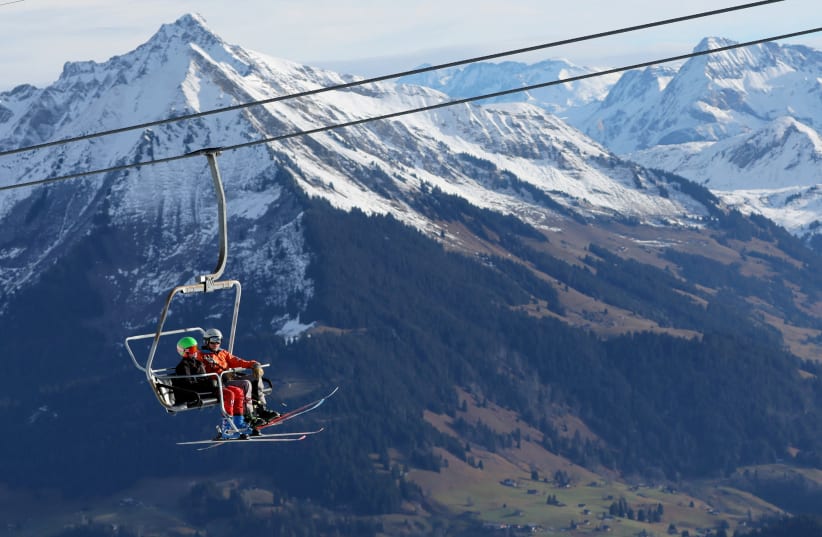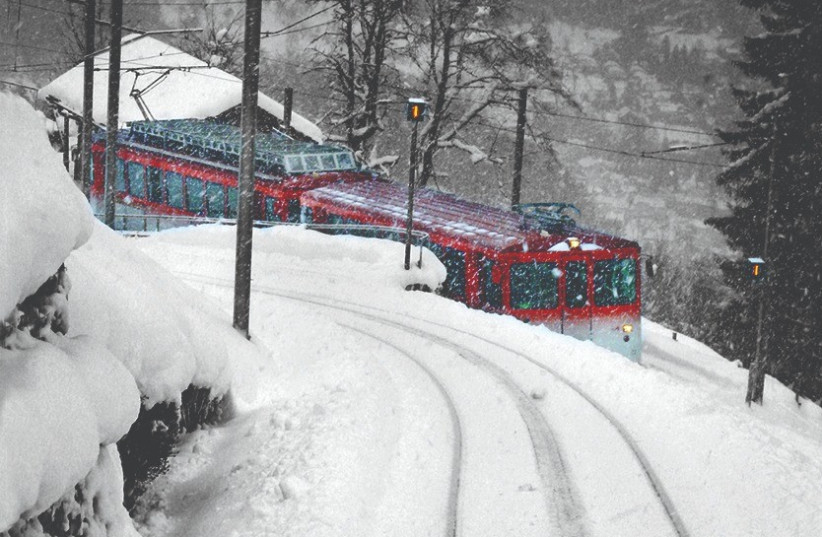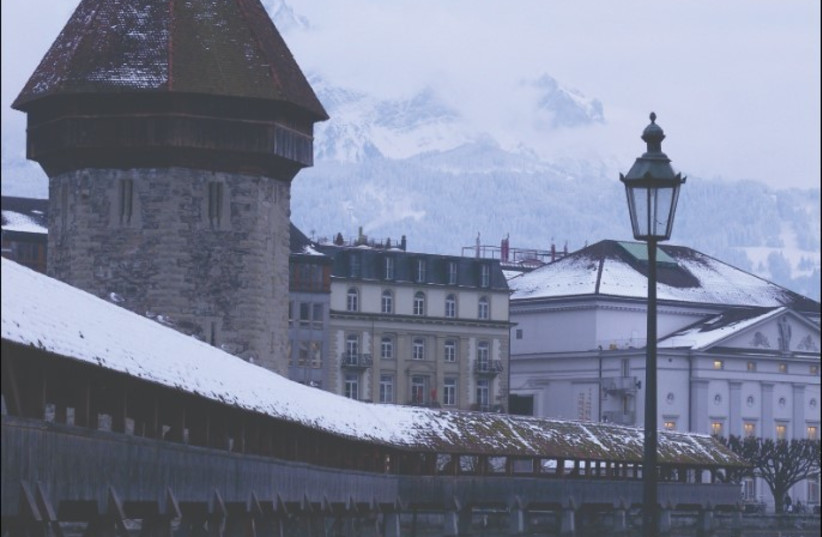In winter we like to snow walk. It’s simple, really: you select your high-altitude Swiss resort, pull on your snow boots (tennis racket shoes not required!) and then just luxuriate into the spectacular scenery and glorious solitude of overnight-gridded snow-walking trails.
Over the years, we’ve ticked off Zermatt, Davos and St Moritz. Staying in the ski resorts themselves was convenience personified for the walks, but didn’t necessarily ingratiate us with the bank manager.
The troubled state of the world economy necessitated personal financial constraints and obliged us to seek a more cost-effective method of procuring our annual snow-fix. Having already booked the Easyjet flight, our thoughts were to cancel and take our chances with Scotland or the Lake District in northwestern England.
Then my wife suggested we should take the holiday in whichever city the plane deposited us, in this case Basel. Or go down the road to Zurich, a very nice place for a city break.
“Hang on,” she said, “an hour or so from the airport and we could be in Lucerne.” The idea hatched that possibly from there we could reach some mountains for a stroll in the snow.
Within reach
As it happens, Lucerne’s house peaks are the world-renowned duo of Pilatus and Rigi. And, doing our homework, we realized that the ski resort of Engelberg was only a 45-minute train ride away.
Ski resort hotels in winter are fixed at high season prices, whereas it’s low season in the city hotels with accommodation typically half the price. We realized that we were intriguingly on the cusp of inventing the winter “city-snow break.”
We grab the 6 o’clock flight on Sunday morning, lose an hour to continental time, arriving in Basel Airport at 9. The pilot’s just told us it’s -14 in town. By 11, with our luggage safely deposited at the hotel in Lucerne, we’re wrapped up at the bus stop with pretty much a full day still ahead of us.
Our Tell Pass, giving mostly free travel within the Lucerne area, is immediately cajoled into action. In 20 minutes we’re at Pilatus base station, clambering aboard our individual two-seater bubble plucked from the circulating carousel and gliding serenely over the snowfields, Lucerne shrinking into the hazy distance. Exiting at Krienseregg, 1,000 meters, we’re now treading crisp snow. And it’s not even one in the afternoon…
Our chosen bolthole was the boutique Renaissance Hotel, a two-minute walk from the railway station, 10 seconds from the bus stop and with the novelty toy of a Nespresso coffee machine for me to play with in the bedroom. The hotel’s coolly-hued Mexican restaurant serves authentic margaritas, followed by sizzling fajitas, presented in a hot cast-iron pan, your choice of filling, finished off with salsa, guacamole and sour cream.
Next morning, we went for the “big one” – Engelberg and the iconic Titlis mountain. This is an attractive archbishop’s mitre of a peak, but for three reasons you don’t want to go walking on it. Firstly, just as with the Empire State Building, if you go up it you can’t see it – better to admire from the Rockefeller Center. Then, always steer clear of the honeypots. “Rotair” whisks you to the summit on the world’s first revolving cable car, but with celebrity comes cost, so avoid the designer stuff just as you would avoid the James Bond rotating restaurant overlooking the Eiger.
Finally, sound out local knowledge, which advises “don’t walk on the Titlis side of the valley in winter, it’s too cold in the shade.” Instead go sunny side up opposite – do the Panoramaweg from the Brunnihutte (accessed by cable car and chairlift from Engelberg) and you’re cocooned in snow-walking paradise, a virgin-white frosty silence embroidered with sublime vistas of the monumental Titlis.
Limbs glowing with health, we return to town. And here’s the rub. Back in Zermatt, after a day’s exertion on the hills, it’s a coffee in the (admittedly) bustling main street and home to the hotel. Here in Lucerne, we can take in the Rosengart Collection, marveling at the Monets, Cezannes and Picassos. Or, crossing the River Reuss on the 14th century Chapel Bridge (its water tower is the most photographed monument in Switzerland), we’re plunged into the innards of the picturesque old town, all chocolate box, hand-painted gabled facades, fountained squares and myriad charming eateries to suit every palate and pocket.
Or again, the department stores and boutiques are all open and touting for custom (this is Switzerland though, with a poor exchange rate, so it’s window shopping for us, but you get my drift).
The second morning dawned unexpectedly fine, so (local knowledge again to the fore, as you won’t have heard of this place) we head for Melchsee-Frutt (told you). Bus from Lucerne, then a cable car across deserted icy wastes. Suddenly, at 2,000 meters, just when you thought you’d be deposited for the proverbial “Seven Years in Tibet” with no prospect of return, you’re confronted with the sight of snow-buried hotels, a frozen lake and the scurrying activity of skiers and snowboarders – Shangri-La and the forbidden city of Lhasa rolled into one.
Another delightful walk amid gathering snow clouds with a spine-tingling cadged Ski-Doo ride back to the resort being the highlight of the day, if not the holiday.
Continued Jewish community through the years
There’s been a small Jewish presence in Lucerne since around the 13th century, the numbers fluctuating according to the usual cycle of welcome, persecution and expulsion. The community re-established itself at the beginning of the 19th century, and the beautiful synagogue was built in 1912, designed by the architect of the Frankfurt synagogue that was destroyed during Kristallnacht. You can take an interesting guided tour, which illuminates the history of the synagogue and community.
Finally to Rigi, the “Queen of Mountains.” Not that high (1,800 meters) for royalty, it boasts a connoisseur selection of winter walks. We took the opulent lake cruise departing from Lucerne (an agreeable day trip itself if you remain on board), disembarking at Vitznau to join the brightly colored Victorian Rigi Bahn cogwheel railway. The planned walk from the summit would take us along the pinnacle ridge, with spectacular views across the main thrust of the Swiss Alps.
It had been raining while we indulged the civilized ambiance of the steamer, but as the train hit the 1,400 meter contour, the precipitation morphed into a blizzard. We’d walked in heavy snow before, no problem we thought. But this was heavier and windier than we’d previously experienced. We couldn’t even see the summit hotel on our arrival and settled for a latte while peering into the whiteout. I’ll send you the brochure pictures of the sun-drenched panoramic views from the walk. We have unfinished business on the Rigi...
From day one we’d been aware of a huge frisson of excitement in town, from the huge Mary Poppins meets Chitty Chitty Bang Bang mobile hanging from the interior of the railway station roof to the ubiquitous pop-up specialty shops selling masks, headgear and all manner of fancy dress. This is Fasnacht, the exuberant carnival when winter spirits are driven out to make way for the approach of spring.
Taking a jaunt into town on our last morning, we encountered brightly-clad crowds en famille, virtuosic music of assorted ethnicity and flowing alcohol (happily no lager louts, and, being Switzerland, frequent sponsored rubbish bins implored neat disposal). I urge you to Google the dates of Fasnacht (celebrated free in various Swiss towns) and arrange your winter break accordingly. Venice and Rio have nothing on this.
Okay, so we got lucky, with good snow-walking freely available above 1,500 meters. On the other hand, it had been far too cold to laze outside on your sun lounger nurturing your gluhwein. There will be globally-warmed winters when you’ll have to seek the snow at higher levels (one Davos midwinter at 1,500 meters we luxuriated in T-shirts with the mercury showing 16, but, armed with your Tell Pass, you’ll discover that the heights above Lucerne can cope with this too.
In conclusion, there’s nothing as interesting, exhilarating and downright economical as the winter city-snow break. It’s the antidote to the daily grind’s “fast forward.” So next year it’s Montreux and the palm-fringed Geneva Riviera, with snow walking in the mountains above Gstaad – the combinations are as endless as your imagination…
A different version of this article was first published in Jewish News in the UK.


